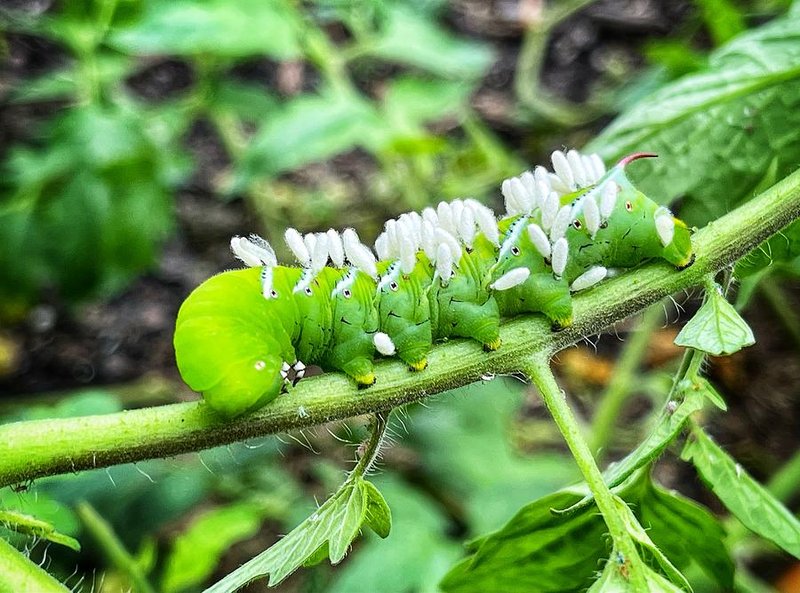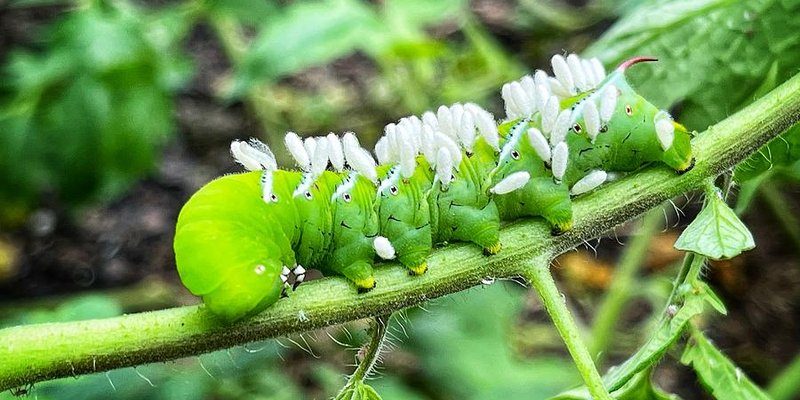
Imagine the life of a hornworm as a dramatic play. In spring, they’re the eager actors, ready to emerge from their eggs, while in summer, they’re busy feasting and growing. As fall approaches, they make life-altering decisions about survival, and in winter, they become hush-hush, preparing for the next act. Understanding hornworm behavior during different seasons not only helps in appreciating their role in the ecosystem but can also aid gardeners and nature enthusiasts in managing their gardening endeavors effectively.
Let’s dive deeper into what makes hornworms tick (or crawl, rather) during different seasons.
Spring Awakening: The Emergence of Hornworms
As spring arrives, temperatures rise and the days get longer—perfect conditions for hornworms to break out of their eggs. Typically, the first signs of hornworm life appear in late April or early May, depending on your location. It’s like the curtain rising on a show that’s been waiting for the right moment to start.
During spring, hornworms generally come from the eggs laid by moths known as sphinx moths. Here’s something interesting: female sphinx moths are savvy; they usually lay their eggs on host plants, like tomatoes or tobacco, where the hornworm larvae can find food right away. Once they hatch, these tiny caterpillars are starved and ready to eat—their main goal being growth.
Once they’ve emerged, hornworms are hungry and have a voracious appetite. They munch their way through leaves, which helps the plants grow while they bulk up. You might notice your tomatoes looking a little worse for wear—if you have hornworms in your garden, it’s a good sign they’re thriving!
Summer Feast: The Growing Stage
By the time summer rolls around, hornworms are fully engaged in the feast of their lives. They reach their peak size during this time, and can grow up to 4 inches long, resembling a green, leafy branch more than a caterpillar!
In these warm months, hornworms are relentless eaters. Their diet primarily consists of the green leaves of nightshades, such as tomatoes, peppers, and eggplants. Here’s the thing: while they can cause serious damage to your plants, they also play a vital role in the ecosystem. They transform plant material into energy, which will later help sustain hungry birds when they become moths. It’s a bit of a cycle, isn’t it?
If you’ve ever noticed patches of devoured leaves on your beloved plants, you might be wondering how to handle these little monsters. Regular monitoring—like looking under leaves for those telltale signs—can go a long way. Handpicking these pests can help keep your garden thriving.
Autumn Decisions: Preparing for Transformation
As autumn arrives, things start to shift for hornworms. Days get shorter and cooler, signaling a change in their behavior. During this season, hornworms start to get serious about their next life stage. They realize it’s time to prepare for metamorphosis.
Once they’ve reached their full size, hornworms seek a safe spot to pupate. This could be in the soil, under debris, or hidden away in plants. It’s like they’re searching for a cozy corner to curl up and finalize their transformation. Here’s a fun fact: hornworms will often dig into the soil and create a small cocoon, where they undergo metamorphosis into moths.
It’s also worth noting that during this time, they might eat less. Their focus shifts from a fast-paced diet to finding a suitable place to rest and transform. If you have hornworms hanging around your garden in the fall, it might be your last chance to see them in their caterpillar form before they become moths.
Winter Hibernation: The Quiet Stage
When winter comes, hornworms go into hibernation, and their activity comes to a standstill. They enter a state known as diapause, a kind of pause in their life cycle where development halts until conditions are right again. It’s a smart survival tactic, like pulling the covers over your head on a cold morning.
During this time, hornworms remain safe underground, where they can withstand the colder temperatures. They don’t eat or move much; their bodies preserve energy. If conditions are especially harsh, they’ve developed mechanisms to help them survive until spring returns.
Yet, despite being “inactive,” these caterpillars are crucial for the ecosystem. Their presence in the soil helps maintain nutrient cycles, and once the weather warms, they’ll emerge as mature moths ready to continue the life cycle.
The Impact of Climate on Hornworm Behavior
Climate variations play a significant role in how hornworms behave throughout the year. Warmer winters can lead to earlier hatching, while cold spells in spring may delay their emergence. Understanding these impacts can give gardeners a leg up in knowing when to expect hornworms.
For example, if spring arrives earlier than usual, you might find hornworms making an appearance sooner, which could mean an earlier assessment of your garden. The key takeaway? Keeping an eye on local weather patterns can guide your gardening strategies.
Additionally, drought or too much rain affects plant availability, which can influence hornworm populations. In areas where plants are struggling, you might notice fewer hornworms, while a flourishing garden could bring a spike in their numbers. Monitoring these environmental cues can be essential for keeping your garden healthy.
Managing Hornworm Populations: Tips and Tricks
If you’re nurturing a garden, managing hornworm populations is key. Here are some friendly tips to help you keep them in check:
- Regular inspections: Check plants, especially the underside of leaves. Hornworms are great at hiding!
- Encourage natural predators: Birds love these caterpillars. Plant flowers that attract them to your garden.
- Handpicking: If you see hornworms, don’t hesitate to remove them. It’s a simple solution that can save your plants.
- Use organic pesticides: If you’re facing an infestation, consider using organic options that target hornworms while being gentle on other beneficial insects.
By simply being observant and proactive, you can manage hornworm populations effectively without adversely affecting your garden.
Understanding hornworm behavior throughout the seasons is more than an intriguing topic; it’s about appreciating the delicate balance of nature. Each phase—from spring emergence to winter hibernation—reveals a story of survival and adaptation. Whether you’re a gardener facing pests or an enthusiast curious about life cycles, recognizing these patterns can help you navigate your relationship with nature more effectively.
So, the next time you spot a hornworm in your garden, take a moment to consider its journey. Each little caterpillar has a role in our ecosystem, participating in the grand cycle of life. And who knows, you might just find it’s a little easier to share your garden with these fascinating creatures when you understand where they fit into the big picture.

